Saddle up marines: The vehicles of Halo
In the Halo games, Master Chief uses a number of vehicles to finish the fight, and the human-made constructs of the UNSC remain the franchise’s most iconic.

The Halo vehicles are undeniable some of the coolest in the whole of sci-fi, and we have a special soft spot for the rugged designs of the UNSC's fighting forces, so we thought we'd have a look at some of Halo's most iconic whips.
As Halo TV series leads the charge on Paramount Plus for live-action video game adaptations on TV, many longtime fans and newcomers are joining Master Chief in his latest adventure and duking it out online on Halo Infinite. Regardless of whether you play through all the Halo games in order or just dive into the latest game, Halo Infinite, you’ll come across several iconic vehicles that stand the test of time and serve well the Spartans and UNSC (United Nations Space Command) marines in the conflict against the Covenant and beyond.
For now, we’ve limited our selection of the most famous Halo vehicles to those used by the UNSC. The aliens’ war machines are equally awesome, but nothing beats driving a 4x4 in the middle of the 26th century on a Sacred Ring in deep space.
Of course, some of the vehicle designs have changed over the years alongside the technology used to make the games, but the Halo universe normally takes advantage of those changes to expand its worldbuilding – as the war against the Covenant evolved, so did the UNSC’s arsenal and machinery.
If you’re up for some heated debate or simply don’t have the time to play through all the Halo games, our Halo games ranked work to best list of every installment released so far (including spinoffs) is a good read.
M290 Mongoose
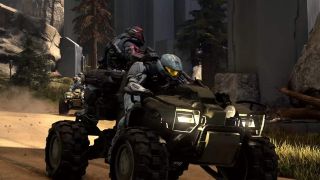
Originally half-developed for Halo 2 before it was dumped, the M274 Mongoose, an ultra-light all-terrain vehicle, made its triumphant debut in Halo 3. While in the game’s campaign it’s mainly used for quick movement between areas when there isn’t a better vehicle around, it quickly became a core part of the multiplayer experience, especially in the hands of pros.
In-universe, the UNSC Marine Corps kept it around due to its swift tactical versatility. In spite of the common usage of its rear platform to carry an additional passenger, the UNSC advises against this. More recently, the original M274 model and its variants have been replaced by the M290 Mongoose, which is slightly larger and packs thicker armor and improved suspension systems. If you join the fight online, you’ll come across plenty of unhinged Spartans trying to run over their enemies with these bad boys.
D77-TC and G79H-TC Pelican
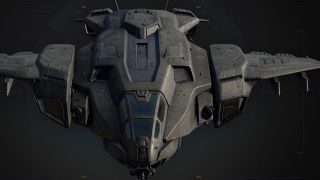
Only controllable during one mission in Halo 4, the Pelican is arguably the most iconic UNSC vehicle alongside the Warthog (this’ll pop up later on our list) and its many variants. It’s been present since the very beginning of the game series and keeps playing a vital role in Halo Infinite and the TV series. It has, however, evolved over the years in many ways.
Up until Halo 4, the D77-TC Pelican was the standard version of the space-to-ground craft, with variants appearing in spinoff games such as Halo 3: ODST and certain bits of the mainline series. Due to its multi-purpose role and limited spaceflight capabilities, it was used outside the UNSC as well – law enforcement, private security, and corporate markets all favored it.
In Halo 4, the D79-TC revision of the Pelican is introduced; essentially, it’s a more heavily armed take on the same design. But, more important is the G79H-TC Pelican, a gunship modification of the standard craft used by Master Chief and Cortana on Requiem in a desperate attempt to combat a new threat. As for Halo Infinite, the Pelican featured prominently in the campaign is described as a D79-TC even though the external appearance was reworked for artistic reasons.
Warthog
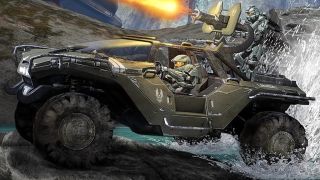
The poster vehicle of the Halo franchise and an all-around reliable wheel-based, hydrogen-injected vehicle. It’s also been in the games since the start and in many different forms: M12 Light Reconnaissance, M831 Troop Transport, and M12B, plus all of their variants. Veteran players love the version with the mounted chain gun or rocket turrets, but those are just a couple of possible configurations of its rear platform.
The in-universe information details the Z-12 prototype was created by AMG Transport Dynamics and tested on the territories of Luna and Mars. Shortly afterwards, AMG received several permanent contracts, with the UNSC eventually adopting the Warthog as the spine of their ground forces. Due to how common and widely used the Warthog is in UNSC operations and regular work, all personnel, regardless of military branch, must know how to operate and maintain the M12.
M808 Scorpion
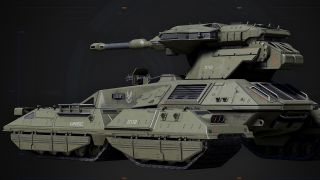
The UNSC’s workhorse of armored attack vehicles, packing a 90 mm cannon, thick ceramic-titanium armor, and a mounted 7.62 mm medium machine gun. Moreover, it only requires a two-man crew to reach its fullest potential, with space for support infantrymen on the sides.
The Scorpion and its few revisions have remained in service for over three centuries due to a killer combination of affordability, simplicity, and the ability to traverse different types of terrain. Unlike other heavier, clunkier tanks, it can maneuver with relative ease around big obstacles. It might not be the UNSC’s most powerful ground vehicle, but it’s generally considered to be the sweet point between firepower and mobility.
AV-14 Hornet
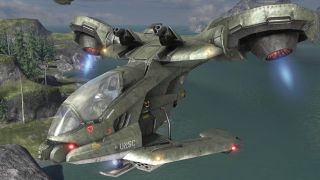
First seen (and piloted) in Halo 3, this light aerospace vehicle served as the tip of the spear in the UNSC’s offense against Covenant forces during the crucial events that ended the Human-Covenant war. It was designed with one pilot and two side-seat passengers in mind, and it has strong offensive capabilities, with two missile pods and one autocannon, despite its nimbleness. The Hornet saw multi-decade service and was often retrofitted for special operations across several theaters of war.
While not overly present in Halo 3’s campaign, it was widely used in the multiplayer component of the game, and later made it into the Anniversary remaster of Halo 2, as well as the Master Chief Collection re-release of Halo 3: ODST. In the mainline games, it was last seen in Halo 4 (but unusable). The Hornet’s biggest presence, however, was in the RTS spinoffs Halo Wars 1 and 2.
Join our Space Forums to keep talking space on the latest missions, night sky and more! And if you have a news tip, correction or comment, let us know at: community@space.com.
Get the Space.com Newsletter
Breaking space news, the latest updates on rocket launches, skywatching events and more!
Fran Ruiz is our resident Star Wars guy. His hunger for movies and TV series is only matched by his love for video games. He got a BA of English Studies, focusing on English Literature, from the University of Malaga, in Spain, as well as a Master's Degree in English Studies, Multilingual and Intercultural Communication. On top of writing features and other longform articles for Space.com since 2021, he is a frequent collaborator of VG247 and other gaming sites. He also serves as associate editor over at Star Wars News Net and its sister site, Movie News Net.

